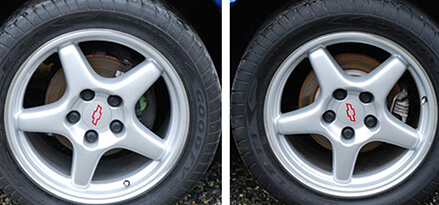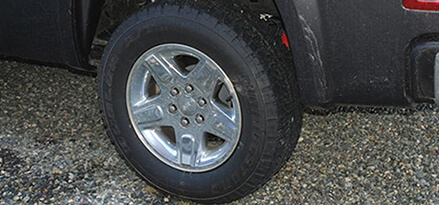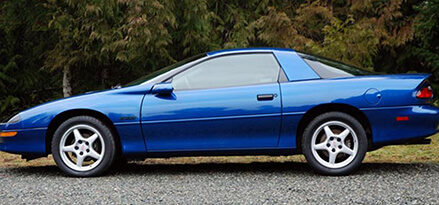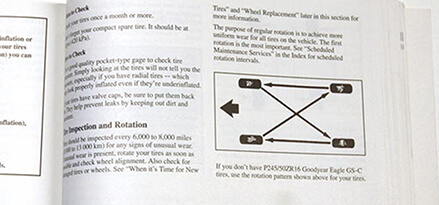Rotating tires is important (and always has been) for car maintenance. If you rotate the respective wheels and tires on a given axle, tire wear is even. The result is almost always balanced traction and handling over a period of time. Most tire warranties demand the tires be rotated on a specific mileage schedule. And many tire manufacturers recommend rotation at between 3,000 and 5,000 miles.
- Front-wheel drive : Rotate the tires in a forward cross pattern. This means that the left front goes to the left rear and the right front goes to the right rear. The left rear goes to the right front and the right rear goes to the left front.
- Rear-wheel drive or AWD/four-wheel drive : Left rear goes to right front. Right rear goes to the left front. The right front goes to left rear. Left front goes to the right rear.
- (Alternate) Rear-wheel drive or AWD/four-wheel drive : The left rear goes to left front. The right rear goes to the right front. The left front goes to the right rear. The right front goes to left rear.
- Same-size directional wheels and tires: The left front goes to left rear. The left rear goes to left front. The right front goes to the right rear. The right rear goes to the right front.
- Different-size directional tires with different-size wheels: Tires must be dismounted and remounted on the appropriate wheel/direction of rotation.
- Non-directional wheels and tires with different sizes front and rear: The left front goes to the right front. The right front goes to the left front. The left rear goes to the right rear. And the right rear goes to left rear.
- Five-tire rotation: Yesteryear, a five-tire rotation was possible, simply because the spare was full size. That’s seldom the case today. Even many light trucks are equipped with spare wheels that do not match the drive wheel combination. If, however, the spare matches the drive wheels and tires, and all tires are the same size and are not directional, then you can perform a five-tire/wheel rotation as follows:
-
When it's not so easy
-

The wheels found on these cars look identical, but they’re not. You see the wheel offsets on the front (first photo) differ from the wheel offset (backspace) on the rear (second photo), plus the tires are directional. With cars like this, there isn’t a lot of choice when it comes to tire rotation. The tires have to be dismounted and remounted on the appropriate side of the car in the proper direction of rotation.
-

Something like a (common) pickup truck often allows for simple four- or five-wheel rotation. It gets tricky with a five-wheel rotation where the spare is mounted on a steel wheel (and the truck, such as this one, has chrome clad aluminum wheels). If you want to keep everything looking good, the spare tire has to be dismounted and swapped out with the last tire in the five-tire rotation.


